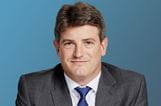What does the UPC mean for patent litigation?
Related people
Headlines in this article
Related news and insights
Blog Post: 03 April 2024
European Commission opens unprecedented abuse of dominance probe in animal medicines sector
Blog Post: 28 March 2024
Publications: 14 March 2024
Infringing gin part II: Court of Appeal victory for M&S against Aldi’s copycat design
Blog Post: 26 February 2024
When, finally, the UPC goes live on 1 June 2023, it will be a game changer for European patent litigation. The UPC will improve efficiencies for organisations who usually litigate in multiple European jurisdictions. With one single action you can get a judgement enforceable across 17 EU member states. At the same time, there is the possibility that patents will be invalidated throughout Europe in one single action.
During the initial transitional period of seven years, the UPC will offer strategic options for litigants who can choose whether to assert their patents in the UPC or in national court proceedings. We expect that in many cases, patentees will seek to enforce patents both in the UPC and nationally in parallel.
There are pros and cons for suing in the UPC, and many uncertainties. No one knows how the case law of the UPC will evolve but the expectation is that while there might be a tendency to being patentee-friendly, judges will focus on making the right decisions.
Allen & Overy with its multijurisdictional setup is best placed to represent our client’s interests in this new court system both on the assertive as well as on the defensive side. We are happy to provide a detailed proposal upon client request. Please contact your usual relationship partner or any of our patent litigation partners in Europe.
With those opportunities and challenges in mind, we look at four aspects of the arrival of the UPC, and what they mean for both patents in Europe and the companies who rely upon them.
1. More cases, more places
The UPC will be an attractive venue for claimants, providing a single forum for the assertion of patent rights covering the majority of Europe.
At present, litigants have to sue for patent infringement and patent revocation in every single country in the EU separately. The UPC provides a forum where one infringement action judgement will be enforceable throughout all UPC member states. With 17 participating member states to start with and a future total of 24 signatory states of the UPC Agreement, a UPC action will cover the vast majority of Europe, a region exceeding the size of the US market in terms of population and cumulative GDP.
For the foreseeable future, the UPC will operate alongside national courts, likely resulting in an overall increase in litigation across Europe.
The UPC might in the long run reduce the number of patent cases filed, but for the foreseeable future we expect to see more cases. The UPC offers a strategic option which – during the transitional period of seven years – will be used in parallel to national litigation. For example, technology companies having large patent portfolios will likely assert a fair share of their patents in the UPC while still using the national systems in addition, thereby increasing the pressure on implementers to conclude profitable settlements. On the life science side, we expect less “appetite” for assertions in the UPC, initially. We will however likely see UPC actions on divisionals and selected other patents not least to try out the system and participate in shaping the case-law.
2. More strategic options, greater complexity
The UPC merges the procedural features of many European jurisdictions, providing new strategic options alongside existing strategies and tools.
With elements of various national specificities, the UPC rules of procedure offer the best of many jurisdictions. With the UPC, a French-type saisie is now available to bring to bear for example on defendants in Germany or Denmark whereas a German protective letter serves to prevent the ex-parte grant of a PI requested for actions taken in Italy. And it may be expected that a bifurcation of infringement and revocation question will remain an exception in the UPC. The various differences in application of the rules between the local divisions and the options of national and UPC jurisdiction offer ample room for forum shopping considerations to provide the best setup for litigants.
The UPC’s procedures also represent a patchwork of national traditions, with judicial benches reflecting that diversity.
Not only do the UPC rules of procedure represent a blend of mainly German, UK, French and Dutch procedural law, the panels of the court will also be staffed with judges of various nationalities and different legal backgrounds. Our multijurisdictional expertise means that we have teams on the ground in most of the relevant UPC jurisdictions and know the judges and how they work. Our UPC teams will usually encompass lawyers from at least two different jurisdictions and will be able to draw upon all relevant national experience to tackle comparative law exercises providing guidance to the UPC in developing its own case law.
While it may simplify European patent litigation in the long-term, the UPC will therefore give rise to significantly greater complexity in the short-term.
The relatively short timeframes in UPC procedure raise the pressure specifically on the defendant. Evidence from various territories need to be managed and the reach and impact of a UPC decision raises the stakes for litigants. Strategies of parallel national and UPC litigation will require more coordination for parties. And plaintiffs are well-advised to start preparation early in order to set up their case as best as possible. Undoubtedly, litigation in the time of the UPC will become more complex during the transitional period. Our teams are prepared for these challenges and will make the most of opportunities in the new system.
3. Quicker cases, more front-loading
With a target timeframe of one year to a first instance judgement, the UPC will provide quicker outcomes than many existing European court systems.
The UPC will provide a procedure which is as quick or quicker as current proceedings in most European jurisdictions and aims at progressing to a judgment within a year. This not only will provide certainty to the parties quicker than in many countries, it also offers a chance to overtake pending EPO opposition proceedings, providing defendants with an extra edge of validity attack. The infamous German “injunction gap” will not likely be a characteristic of UPC procedure.
Further, the front-loaded nature of UPC proceedings implies greater preparation by the claimant, with significant time pressures on the defendant.
UPC proceedings are front-loaded where litigants set out their case and give all the evidence they are relying on in the early stages of written proceedings. This fast-track approach is not dissimilar to the current experience in many continental European court systems. After exchange of briefs, in the interim phase, the court is set to actively manage the case, decide on whether to hear witnesses and experts, provide guidance for further action to the parties and progress the case to a one-day oral hearing. Plaintiffs and (prospective) defendants in the UPC will start preparing their cases even earlier than nowadays. Where potential defendants do not know what patent will be asserted against them, as is not unusual in the technology sector, there is more scope for unknowns and rapid action being required. Also in these cases, it is paramount to be prepared at least on the organisational side, having a team ready, lining up search capacity for prior art searches, etc. We are prepared and have the depth of resources to help our clients address any claims if and when they come to pass.
4. A new forum with global significance
Covering 17 jurisdictions with one proceeding, the UPC will rank alongside the US and Chinese in terms of its significance as a single venue.
The UPC will kick-off with 17 member states covering the major European markets. There are seven countries yet to ratify the UPC agreement, bringing the final number up to 24 jurisdictions of UPC Agreement signatory states. This will be comparable to the US market in terms of covered population and GDP and the UPC's decisions will have a global impact.
How we can help you
Our European patent litigation team provides the geographical coverage and depth of resource to support our clients, no matter how big the case. Our expert practitioners are steeped in pan-European and national patent litigation and are located both in and out of the UPC member states, meaning we can assist our clients both in the UPC and in parallel national proceedings in non-UPC jurisdictions. Our European litigators work together as a seamless unit to prepare and fight our clients’ cases when the pressure is on. This European offering is complemented by our significant US and China offering, providing global representation to our clients and operating as one team to support our clients and their strategic needs.



